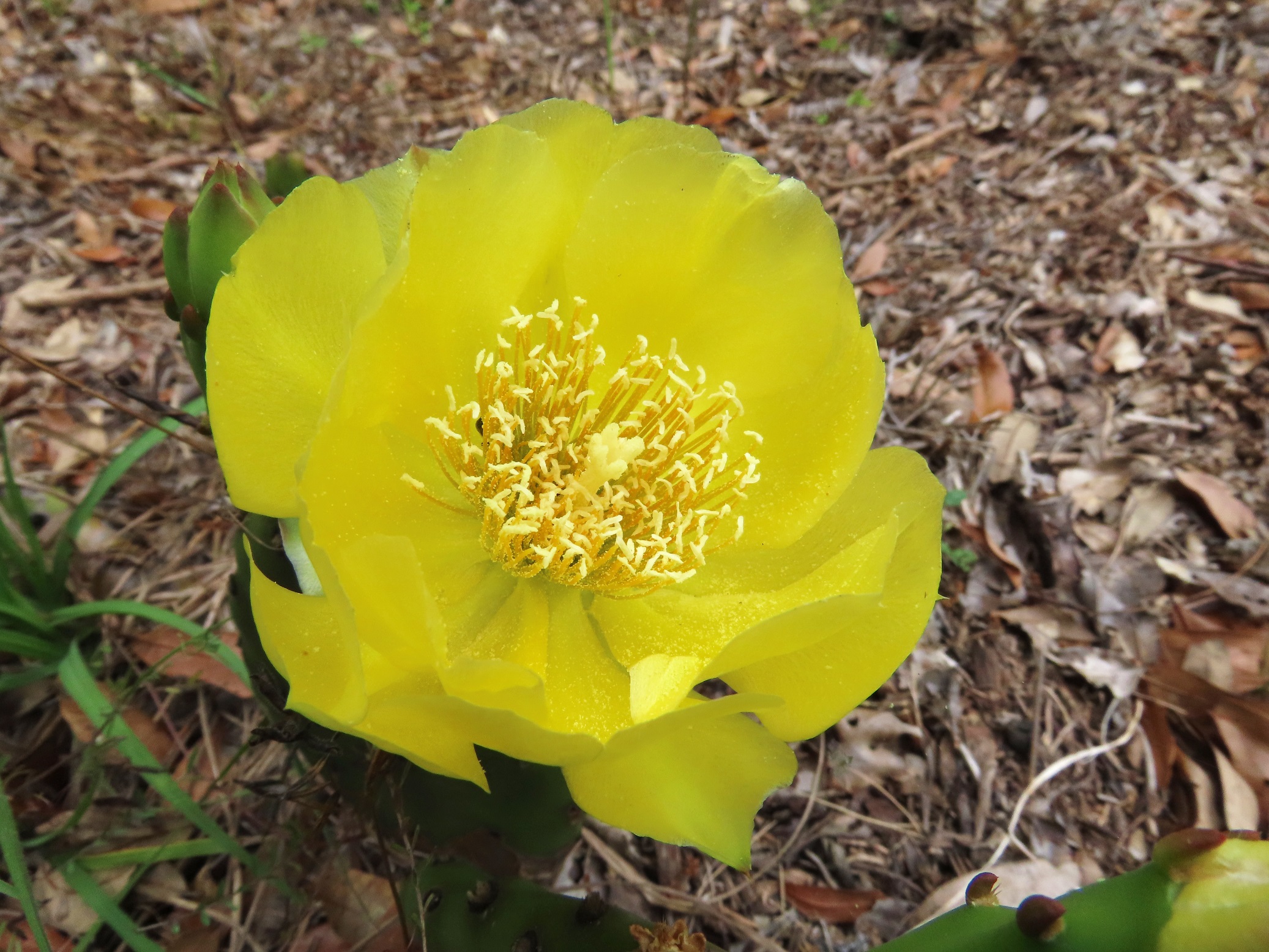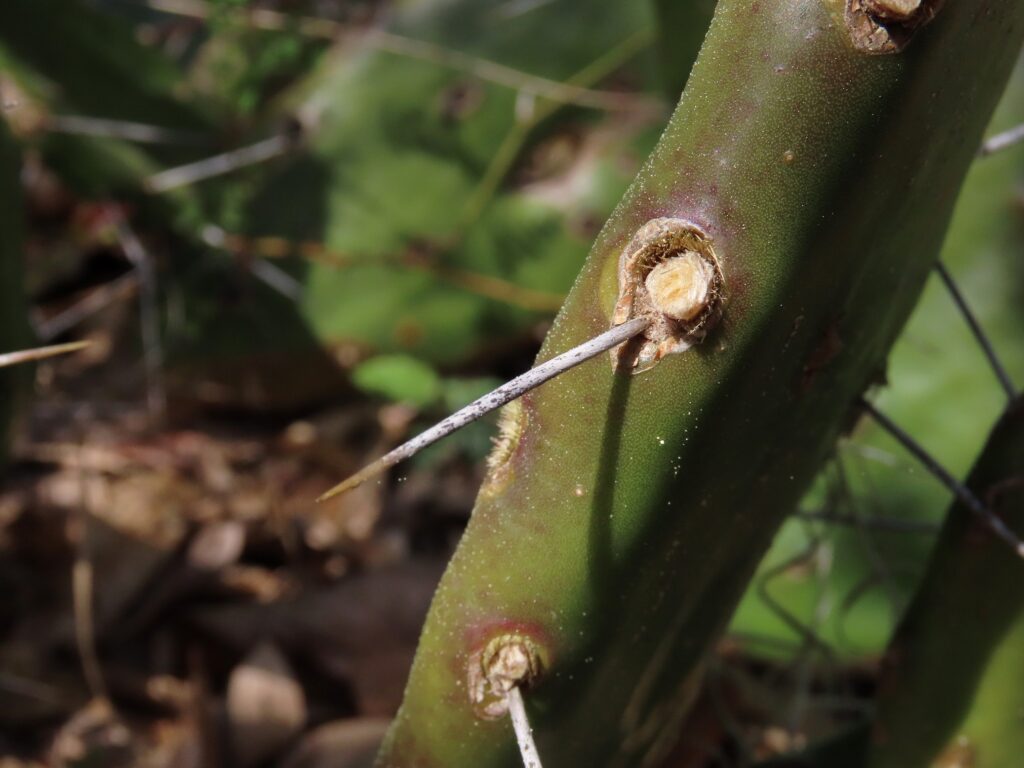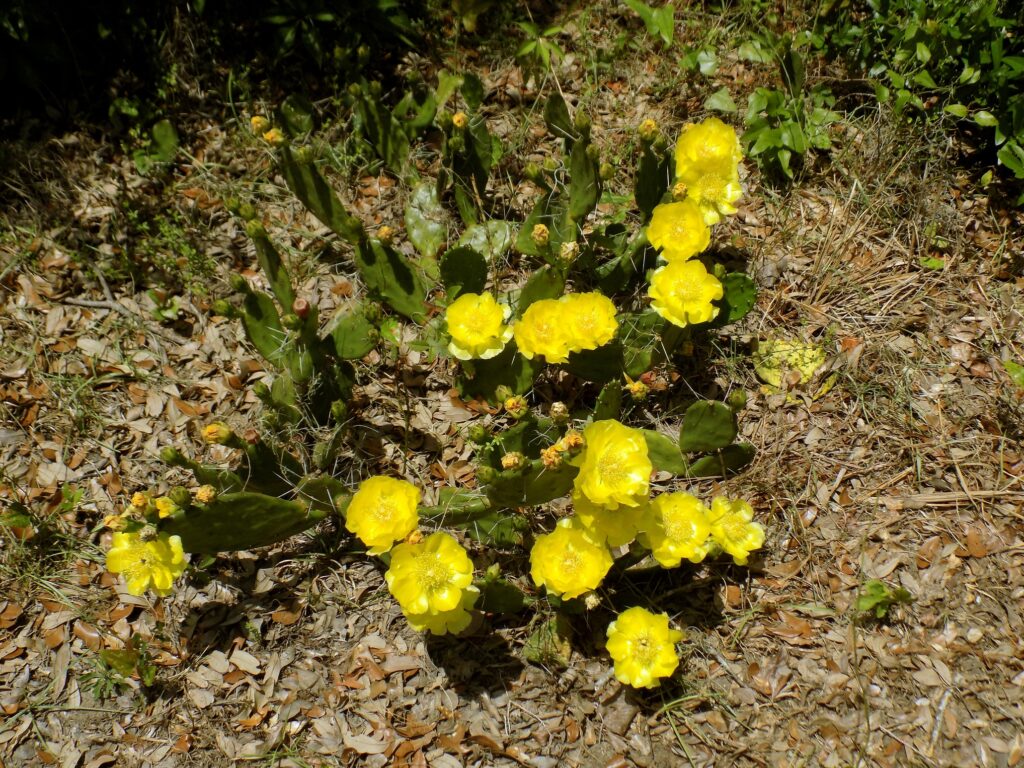



This week for Flora and Fauna Friday we have sandy, spiny succulents. The week we’re talking about the Prickly-Pear Cacti (Opuntia spp.).
In South Carolina, the Prickly-Pears are our only representative of the Cactus family. On Edisto Island, three native species of Prickly-Pear exist. The Erect Prickly-Pear (Opuntia stricta) is a tall cactus with large “pears.” You’ll most often see this cactus as an ornamental planting but it can show up naturally along the beach. The Cockspur Prickly-Pear (Opuntia pusilla) is a small cactus that can be found lying atop the sand, sunbathing between the beach dunes. It has small, almost cylindrical pears and a tangled, prostrate growth form. The Eastern Prickly-Pear (Opuntia humifusa) is the most common Cactus you’ll encounter on Edisto Island. It’s a smaller cactus that can reach 18 inches in height and tends to fall-over as it grows. Our Prickly-Pears bloom in late spring and early summer. Their glaring solar-yellow flowers are large, showy, and loved by Bees of all sizes. These flowers peel away to leave a cratered pear behind. Over time this pear reddens and ripens into the Prickly-Pear fruit. Their fruits are edible but not readily accessible as I’ll explain later.
All our Prickly-Pears love sandy soil and full sun and all are common in dune ecosystems. The Eastern Prickly-Pear is also quite common on the sandy hills near tidal river systems. Cacti are able to survive in hot, dry, sandy environments as perennials because they practice a specialized form of photosynthesis and can store a large volume of water in their stems. During the day, the Prickly-Pear closes its stomata, the microscopic pores across the plant that allow it to breathe. This stops the Cactus from losing water through these pores due to evaporation. However, it can no longer breathe in the Carbon-Dioxide it needs to create sugars. With Crassulacean Acid Metabolism Photosynthesis, or CAM for short, the Cactus can suck in Carbon-Dioxide all night long and store it until the sun comes up. This allows the cactus to breathe all night long and soak up sun all day, without drying up or starving in the process. These adaptations permit Prickly-Pears to survive in even the most arid of conditions.
Prickly-Pears have an interesting physiology. The “pears” that you see are not leaves. They’re the stem of the plant. This stem is where the plant stores water and carbohydrates and where it conducts photosynthesis. So where are the leaves? A cactus, with its water and sugar rich flesh, is an enticing target to herbivores in any arid ecosystem. As a defense against hungry mouths, Cacti have reduced and repurposed their leaves into devilish spines. These spines are as stiff and sharp as a needle and finely serrated. In addition to the spines, Prickly-Pears produce an even more insidious defense called glochidia. Glochidia are minute but extremely sharp hair-like spines found in dense clusters at the base of the larger spines. These Glochidia are microscopically barbed. Upon contact with skin, they pass through effortlessly. Their barbs make them impossible to remove and cause immense irritation. If you’ve ever worked with insulation, it’s like having fiberglass under your skin but worse. As such, Prickly-Pears are best appreciated at a distance!